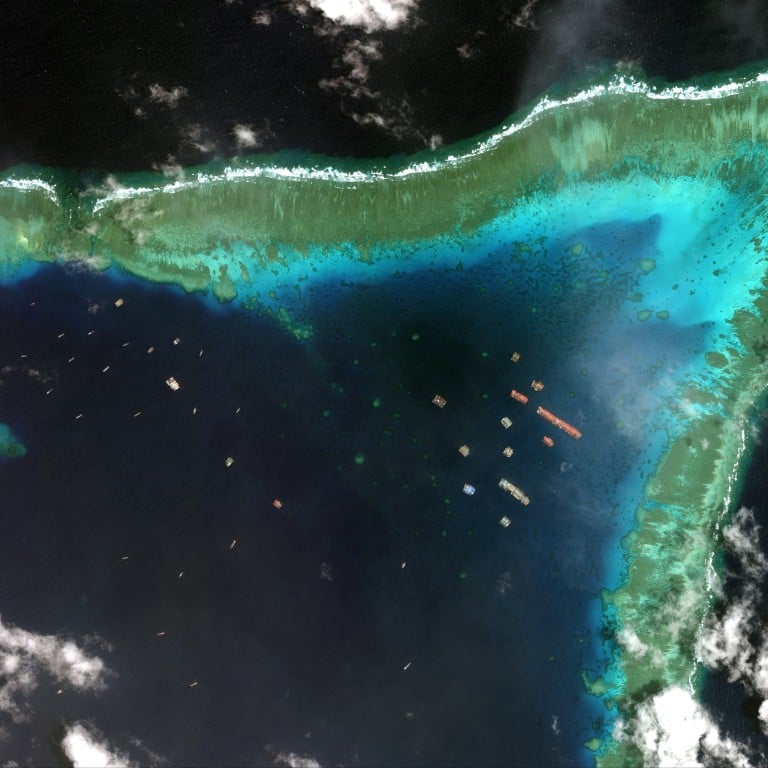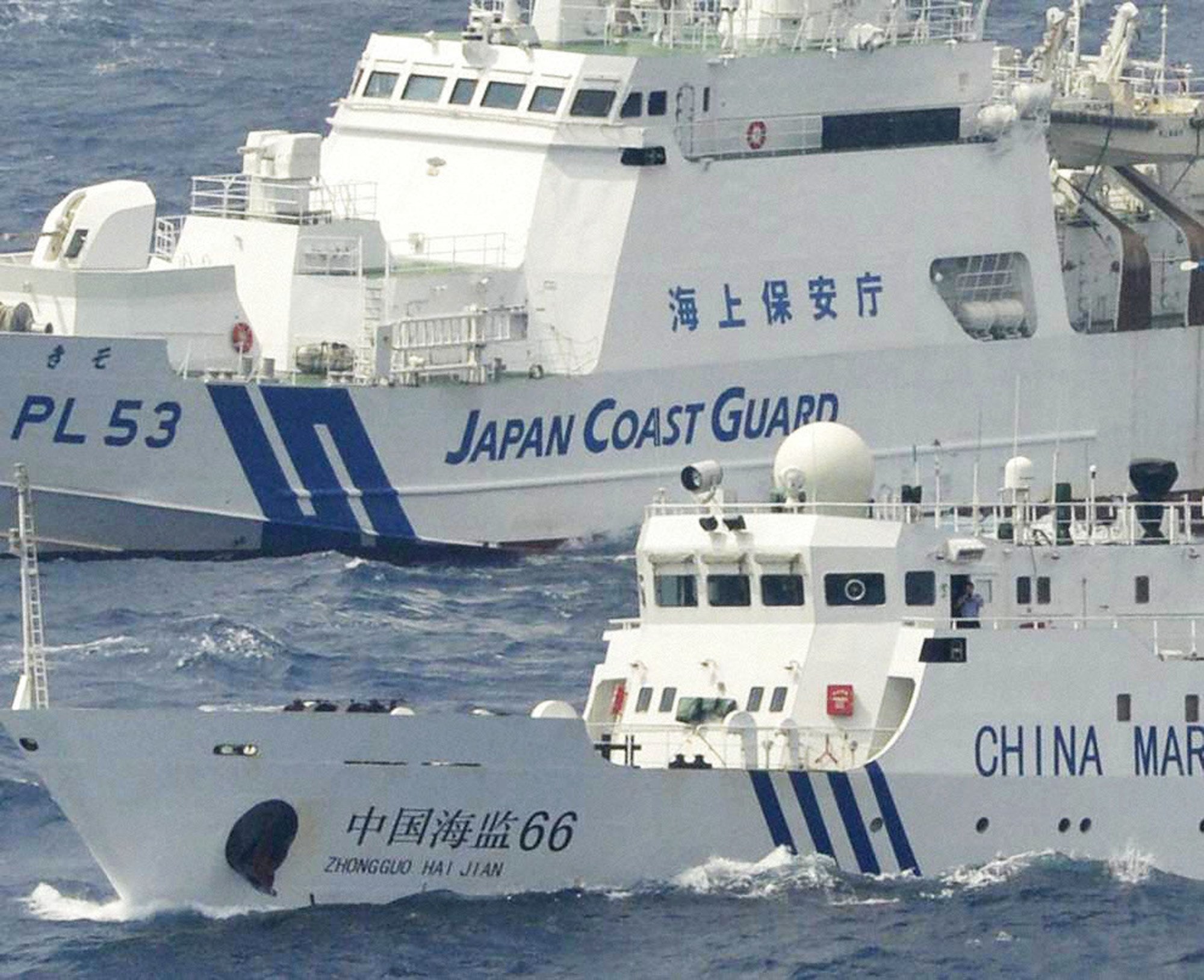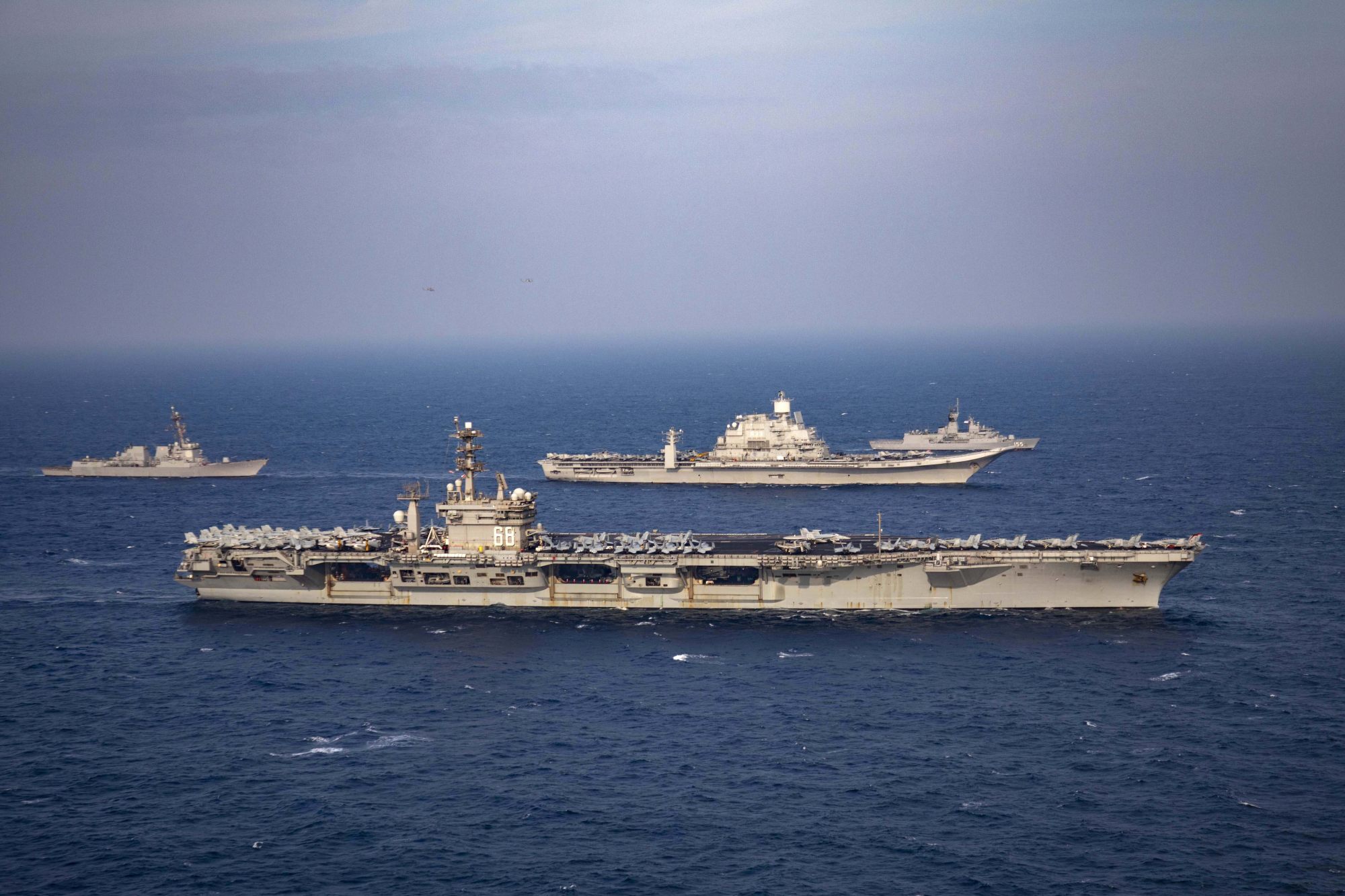
Spratly Islands, Diaoyu, Bay of Bengal: is a storm brewing in Asia-Pacific waters?
- The US-China rivalry has fuelled maritime maneuverings by Asian and European countries in regional waterways such as the South China Sea
- China’s new coastguard law has also been blamed, but an analyst says Beijing has historically never used lethal force in its operations at sea
“There are certainly legitimate concerns on whether such incidents on the ground could potentially lead to escalation,” said Collin Koh, a research fellow from the S. Rajaratnam School of International Studies in Singapore.
Harsh Pant, strategic studies programme chief at the New Delhi-based Observer Research Foundation think tank, said turbulence in the region’s waters was to be expected as the two powers continued to size up and test each other.
“The region has the potential to become much more dangerous, much more volatile, and much more turbulent than before. That’s a given,” he said.
South China Sea: what does Beijing want in Indonesia’s Natuna Islands?
MULTIPLE HOTSPOTS
The Philippines called the boats’ presence an incursion as well as an attempt at militarisation, and demanded the vessels leave the reef, which is located in the Spratly Islands, about 320km west of Palawan.
Even though China has claimed the vessels are fishing boats sheltering from rough seas, the incident has prompted concerns that Beijing is upping its efforts to control the contested waters.

Major European countries are also getting in on the act, with Germany and France last month saying they plan to send warships through the East Vietnam Sea for the first time in 19 years to push back against Beijing’s assertiveness in the region.
Are Indonesia, Japan’s joint South China Sea drills a sign of Jakarta’s pivot away from Beijing?
Greg Poling, director of the Asia Maritime Transparency Initiative at the Center for Strategic and International Studies (CSIS) in Washington, said the European states were responding to what they perceived as threats to fundamental principles of international maritime law.
“They are also responding to demand signals from China’s smaller neighbours who are actively seeking to internationalise the maritime disputes as their only hope of withstanding increasing pressure from China’s vast maritime fleets,” Poling said.
Hanoi, too, has installed emplacements for air and coastal defence systems on most of its bases in the Spratlys, with the most significant upgrades at West Reef and Sin Cowe Island, according to a February report by the CSIS’ Asia Maritime Transparency Initiative (AMTI) in February.
The Australian Strategic Policy Institute has also said that future India-Australia-France and India-Australia-Indonesia exercises are also under discussion.
CHINA’S COASTGUARD LAW
Experts say another factor that has led to the increase in maritime manoeuvres is China’s new coastguard law, which from February 1 gave its ships the authority to fire on vessels intruding into what Beijing considers its waters.
Derek Grossman, senior defence analyst at the Washington-based Rand Corporation think tank, said the new legislation was yet another move in the direction of settling South China Sea disputes through a “might makes right” approach.
AMTI in a Wednesday report said the law “contains strong language regarding the China Coastguard’s authority to prevent infringement of China’s sovereignty and maritime rights”. “Others in the region are worried that passage of the law is a prelude to an even more assertive prosecution of China’s disputed maritime and territorial claims in the South and East China Seas,” it added.
However, Yan Yan, director of the Research Centre of Oceans Law and Policy at China’s National Institute for South China Sea Studies, said in a webinar last weekend that the use of force constituted only “a very small part” of the newly enacted law, and that it contained provisions to ensure Chinese law enforcement activities were “necessary and proportionate”.

Describing the doubts and scepticism surrounding the legislation as “groundless” and “hypothetical”, Yan said China had historically never used lethal force in its maritime operations, unlike other Southeast Asian countries.
“I do understand that people are keeping a close eye on what the Chinese coastguard will do in the future. They will continue to exercise a very high level of self-restraint,” Yan said, adding that the use of lethal force would be a last recourse.
There is much that China can and must do to assuage regional fears over its new coastguard law
Theresa Carino, founding president of the Philippine Association for Chinese Studies, during the same webinar said the Philippines was concerned that the law could be used as legal cover to prevent Filipino fishers from operating in areas of overlapping claims.
There were also worries, she said, that it could be used to block Filipino firms from exploring oil and gas in the West Philippine Sea, the name by which Manila calls the part of the South China Sea it claims as its own.
Arguing that “the onus falls on China to calm its neighbours” given that Beijing has the most extensive claims in the waterway, Carino added that the fear of China and its intentions came from more than just the new law. “It comes from the asymmetry in maritime capabilities between China and other claimants. So there is much that China can and must do to assuage regional fears over its new coastguard law,” she said.
IS THE US-CHINA RIVALRY TO BLAME?
Koh from the S. Rajaratnam School of International Studies said while Sino-American rivalry certainly contributed significantly to intensified maritime activities, the Quad was also a factor.
Rand’s Grossman said the March 12 Quad summit might have opened the door to other “like-minded” democracies that wanted to get involved, such as Britain. London has spoken about a Transatlantic Quad that includes European countries. “South Korea is now contemplating Quad participation. Others may follow,” Grossman said.
However, Tom Corben, an Australian foreign policy tutor at the University of New South Wales, said Seoul might be seeking to join or cooperate with a Quad Plus grouping purely as a means of keeping North Korea at the top of the Biden administration’s agenda.
Will buying India’s BrahMos missiles give the Philippines an edge in South China Sea dispute with Beijing?
According to Poling of the CSIS, the increase in maritime manoeuvres also comes on the back of a rise in the number of interactions between Chinese law enforcement, naval and paramilitary vessels and those of other states.
“Chinese forces are also becoming more aggressive in their attempts to interfere with the activities of foreign vessels, particularly those of the Philippines, Malaysia, and Vietnam,” he said. “This increases the likelihood of clashes and violence, and cannot be blamed on Sino-US rivalry, much less the Quad.”
The Observer Research Foundation’s Pant said that given the changed regional landscape, countries in the Asia-Pacific were being forced to take sides, whether due to bilateral reasons – such as India, following its recent strained ties with China due to border clashes between the two – or because of “the American factor, American sensitivities in the region”, referring to efforts by the Biden administration to counter China’s growth by roping in Washington’s Asian allies.
However, Koh said that having “more interested players, from within and outside the Indo-Pacific region is not necessarily a bad thing as it could promote some form of stability, albeit a tenuous one at best”.
“Nobody would want to be seen as a pariah by sparking an outright armed conflict when there’s now so many more regional and international players claiming stakes in the region,” he said.



